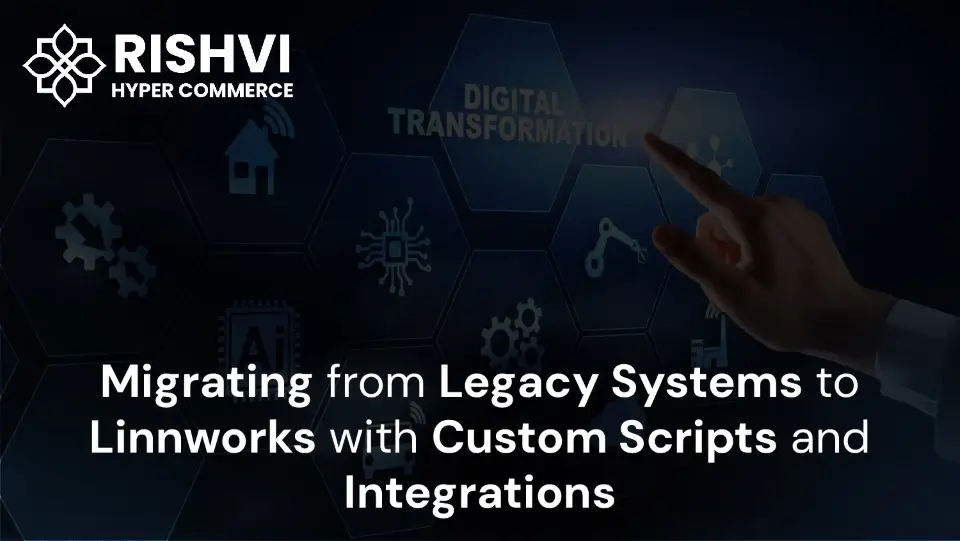
For many online retailers, legacy systems eventually hit a wall. They might have served well in the early years, but as order volumes increase and new sales channels get added, these older platforms often can’t keep up. Limited integrations, manual workarounds, and poor scalability end up costing both time and money.
That’s where Linnworks comes in. It centralizes inventory, orders, and fulfillment while giving businesses the flexibility to scale. But moving from an older system to Linnworks isn’t just about transferring data — it’s about making sure your workflows, rules, and integrations all work seamlessly from day one. That usually means a mix of careful data mapping, custom scripts, and reliable integrations.
Why Businesses Decide to Move
The signs that it’s time to move away from a legacy platform are usually clear:
- Integrations with marketplaces like Amazon or eBay are limited or outdated.
- Too much time is spent on manual data entry or reconciling stock.
- Systems can’t handle seasonal peaks or high-volume sales days.
- IT costs keep climbing just to keep the old software running.
Switching to Linnworks gives you a single, modern hub where orders and inventory are managed automatically — but to get it right, the migration process needs to be handled with care.
Step 1: Plan the Migration
Rushing into migration almost always causes issues later. A solid plan should cover:
- System review: Identify what data needs to move — products, orders, customers, suppliers, warehouses.
- Workflow mapping: Note how your current system handles order routing, invoicing, and stock allocation.
- Priorities: Decide which marketplaces and warehouses should go live first in Linnworks.
Getting clarity up front avoids surprises later when scripts and integrations are applied.
Step 2: Clean and Map Your Data
Legacy systems often carry messy data. Duplicate SKUs, inconsistent product IDs, or outdated inventory figures are common.
Before importing into Linnworks:
- Standardize product codes and descriptions.
- Align inventory quantities with real stock levels.
- Map old order history so reporting remains intact.
Cleaning up now saves hours of troubleshooting later.
Step 3: Use Custom Scripts to Match Your Workflows
Every business has its own way of doing things, and Linnworks allows for custom scripting so you don’t have to abandon processes that work.
For example, scripts can be set up to:
- Route orders to the nearest or cheapest warehouse.
- Generate invoices or shipping labels that match existing templates.
- Apply marketplace-specific rules for couriers, packaging, or VAT.
This ensures that switching platforms doesn’t mean starting from scratch.
Step 4: Integrate External Systems
Most businesses run more than just an order management tool. Accounting software, ERP systems, or courier platforms also need to stay in sync. During migration, APIs and integrations should be tested thoroughly to make sure data flows — like stock updates or order confirmations — remain reliable.
A staged rollout, where integrations are tested before retiring the old system, helps avoid downtime.
Step 5: Test and Error-Proof
Mistakes during migration can lead to missed orders or stockouts. A safer approach is to:
- Run both systems in parallel for a short period.
- Test custom scripts in a sandbox before going live.
- Set up alerts for order failures or SKU mismatches.
- Train staff on Linnworks ahead of full migration.
Catching errors early means fewer headaches once the legacy system is turned off.
Step 6: Optimize After Go-Live
Going live isn’t the finish line. Once Linnworks is running, use its reporting and automation features to refine workflows further. For example, track fulfillment speed across warehouses, review marketplace profitability, and explore forecasting tools for stock planning.
Continuous tweaks help you get the most from the platform and ensure long-term scalability.
Moving from a legacy system to Linnworks is more than just a technical upgrade. It’s a chance to streamline operations, reduce manual work, and set up your business for future growth. With the right approach — solid planning, clean data, custom scripts, and strong integrations — the transition can be smooth and rewarding.
If you’re planning a migration, working with experts who understand Linnworks customization can save time, reduce risk, and make sure the new setup truly matches your business needs.



